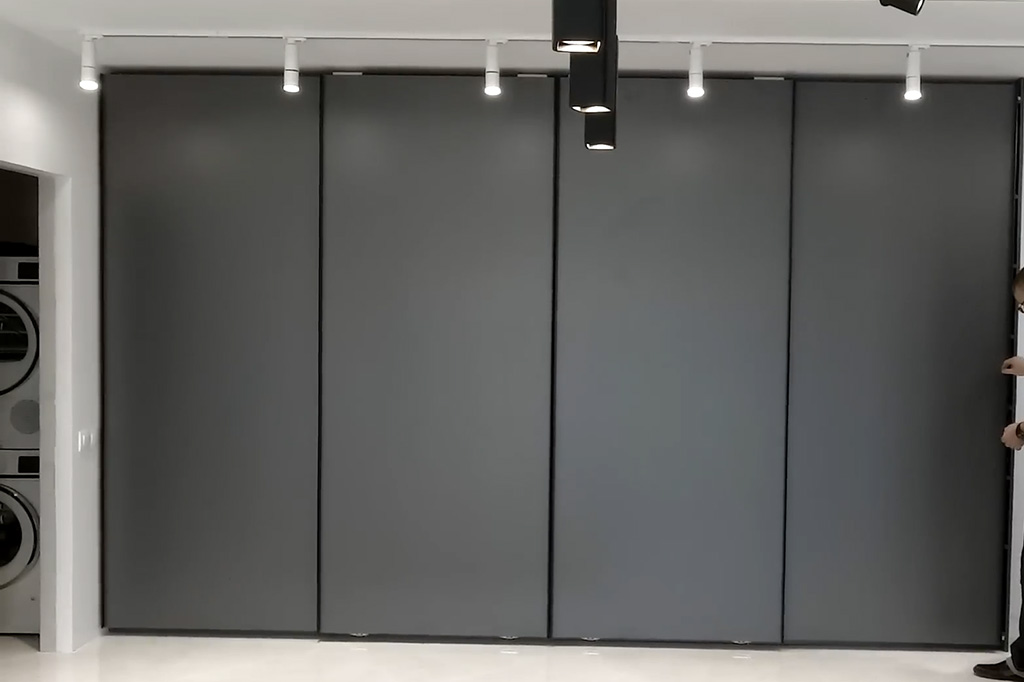Choosing the right wardrobe for your home or office is a crucial decision that impacts space organization and the functionality of the interior. The modern market offers many types of wardrobes for different needs, each with its unique advantages and features. Whether you are furnishing a new apartment or just want to update your interior, it’s essential to understand which type of wardrobe suits you best.
Main Types of Wardrobes
There are several main types of wardrobes, each suitable for different needs and spaces. The choice depends on the available space, the style of the interior, and functional requirements.
Sliding Wardrobes
Sliding wardrobes are an ideal solution for saving space. They feature sliding doors, making them perfect for narrow rooms. These wardrobes often come with mirrored doors, visually expanding the room. Sliding wardrobes are popular choices for bedrooms and hallways, where preserving maximum free space is crucial.
Advantages:
- Space-saving.
- Mirrored doors.
- Suitable for small rooms.
Disadvantages:
- Higher manufacturing costs compared to other types.
Hinged Wardrobes
Hinged wardrobes have classic open doors, typically used in larger rooms. They can be made from various materials and enhanced with decorative elements. These wardrobes are a good choice for large bedrooms or walk-in closets.
Advantages:
- Classic design.
- Affordable prices.
Disadvantages:
- Require more space for door opening.
Modular Wardrobes
Modular wardrobes offer maximum flexibility in design. They can be adjusted and expanded as needed, making them ideal for those seeking custom storage solutions. These wardrobes can be adapted to any space and configuration.
Advantages:
- Flexibility in use.
- Ability to change configuration.
Disadvantages:
- Can be more expensive due to custom solutions.
Built-in Wardrobes
Built-in wardrobes are perfect for narrow spaces and irregular rooms. They can be installed in niches or under stairs, making the most of available space. However, such wardrobes cannot be moved, which limits their flexibility.
Advantages:
- Space optimization.
- Suitable for non-standard rooms.
Disadvantages:
- Cannot be moved.
Material and Design Features of Wardrobes
When choosing a wardrobe, it’s important to consider the materials and design. The most popular materials for wardrobes include wood, MDF, and plastic.
- Wood: A classic choice known for its durability and aesthetics. Suitable for traditional interiors.
- MDF: A more affordable material that offers a variety of designs and colors. Often used in modern styles.
- Plastic: A lightweight and practical material that can be used in humid rooms, such as bathrooms.
How to Choose a Wardrobe for Your Home?
Each room has specific storage requirements, so it’s essential to choose a wardrobe based on its functionality and internal configuration. Key factors include the number of shelves, the presence of drawers, and spaces for hanging clothes.
Types of Wardrobes for Small Rooms
Wardrobes with Mirrors
Wardrobes with mirrors are another excellent solution for small spaces. Even if the wardrobe is not sliding, having mirrors on the doors allows you to visually expand the room. Mirror surfaces reflect light and create a sense of more space, making them ideal for small bedrooms or hallways.
In addition to the visual effect, mirrored doors serve a practical purpose – they allow you to quickly check your appearance before leaving home. This makes such wardrobes doubly useful for limited spaces.
Advantages of wardrobes with mirrors:
- Visually enlarges the space.
- Practicality – the mirror can be used daily.
- Light-reflecting properties that brighten the room.
Narrow Wardrobes
For very small rooms or narrow hallways, narrow wardrobes can be the optimal choice. They take up minimal space but still provide ample storage. Narrow wardrobes can be single or double-doored and often feature pull-out drawers for maximizing internal storage.
This type of wardrobe is perfect for hallways, entryways, small bedrooms, or even bathrooms where every inch of space matters. Narrow wardrobes can vary in height – from low to tall – allowing you to choose the best model for any room.
Advantages of narrow wardrobes:
- Compact and space-saving.
- Functional for small spaces.
- Available in various heights and configurations.
How to Organize Storage in a Wardrobe?
Organizing the space in your wardrobe is crucial for making the most of its potential. Using pull-out drawers, shelves, and organizers will help optimize space and ensure convenient storage of all items.
Different types of wardrobes have their unique advantages, and the choice depends on your needs and the specifics of your interior. Whether you’re looking for a solution for a large bedroom, a small room, or an office, you’ll find the perfect option that meets your requirements.








